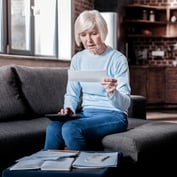Related: 15 Most Expensive States for Long-Term Care: 2020
The cost of long-term care services increased across all provider types in 2021 and increased more substantially in certain settings, according to Genworth’s annual cost-of-care survey, released last week.
Put it down to demand outpacing supply.
“Even more than in prior years, the increased demand for labor and the current national labor shortage have made it more difficult to hire and retain long-term care professionals,” Brian Haendiges, president and chief executive of Genworth U.S. Life Insurance, said in a statement.
“Those challenges are coupled with the broader trend of growing wages and increases in the cost of doing business associated with regulatory, employee certification, and equipment costs, which have all been exacerbated by the pandemic.”
Haendiges noted that many care professionals are leaving the industry to pursue higher paying jobs or because of concerns about potential exposure to COVID-19 while on the job. “The costs of recruiting, retaining, and training new care professionals is likely to remain high as we approach 2023.”
Genworth said that while labor costs are likely to remain high, conversations with care providers indicate that higher costs associated with personal protective equipment and other pandemic protocols, such as testing, vaccination status tracking and quarantining, may subside as case numbers fall.
It noted, however, that wide variability in care costs for markets across the U.S. likely will continue, owing to state and local regulations, demographics and population shifts.
Price Increases
The 2021 survey found that the cost of care services has increased as follows:
- Assisted living facility: up 4.7% to an annual national median cost of $54,000 per year
- Home health aide, which includes “hands-on” personal assistance: up 12.5% to $61,776
- Homemaker services, which include assistance with “hands-off” tasks, up 10.6% to $59,488
- Semi-private room in a skilled nursing facility: up 2% to $94,900
- Private room in a nursing home: up 2.4% to $108,405
While price increases compared to last year, especially for home-based services, are significant, over the last five years, the average annual increase for these services has been in the 2% to 6% range.
Even as costs rise, Genworth research indicates that home-based care remains the preferred choice for families. “The pandemic has shown us that home is the safest place to care for people,” Jeff Huber, president of Honor Technology and chief executive of its Home Instead subsidiary, said in the statement.
“As our population ages and more people require long-term care, it is clear that the most scalable, comfortable, and safest solution is home-based care.”
See the gallery for the 15 most expensive states for long-term health care in 2021, ranked by the average annual cost across services.







 February 22, 2022 at 10:47 AM
February 22, 2022 at 10:47 AM


























 Slideshow
Slideshow





